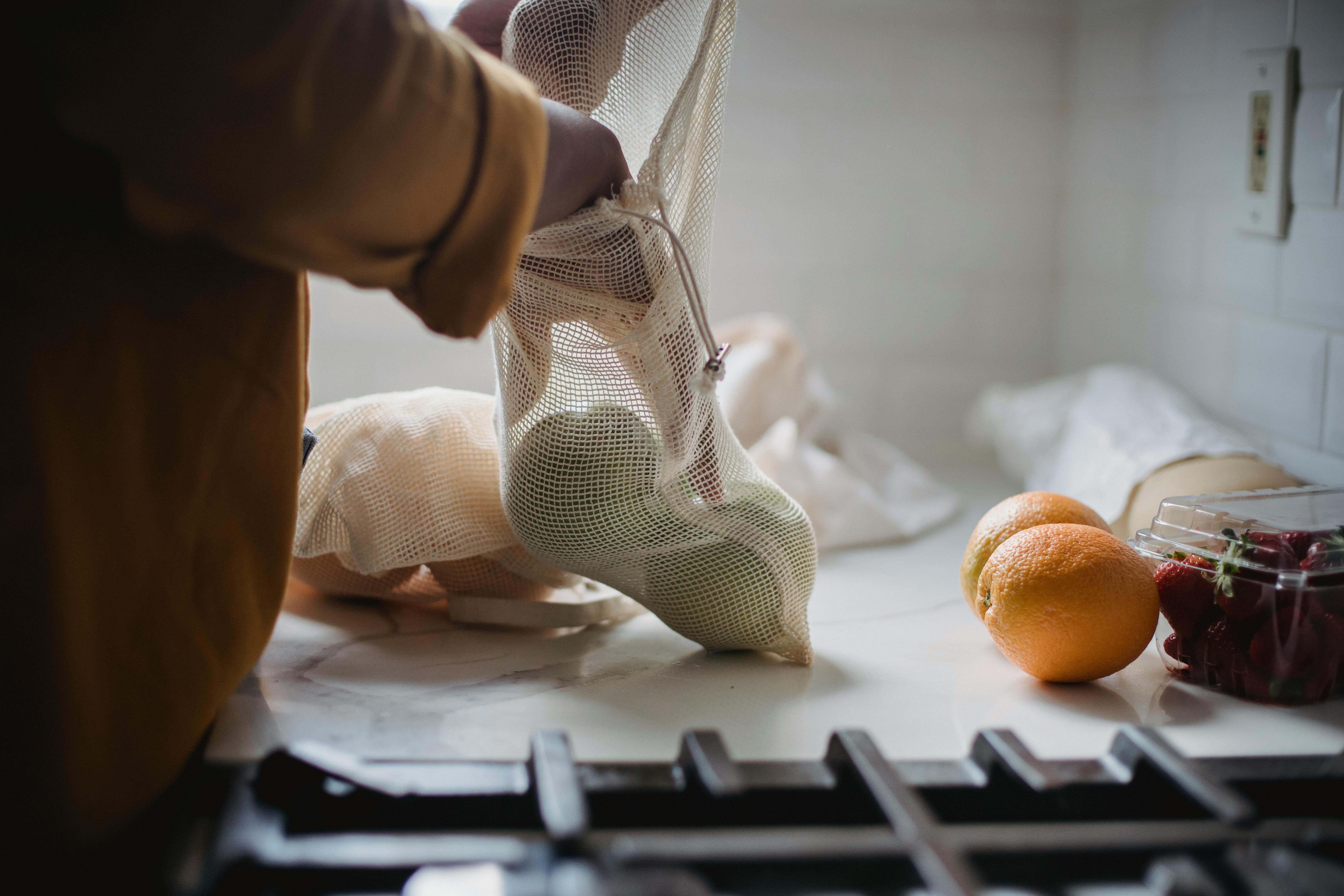Dehydrating strawberries is a great way to preserve them for longer periods of time. If you’re wondering how long to dehydrate strawberries, the answer depends on a few factors. This article will provide an overview of the process and discuss the length of time needed to properly dehydrate strawberries. It will also provide tips on how to store and use your dried strawberries.It typically takes between four and eight hours to dehydrate strawberries, depending on the method used and the desired level of dryness. To dehydrate in an oven, preheat the oven to 140°F (60°C) and spread the strawberry slices out on a baking sheet in a single layer. Bake for four to six hours, flipping the slices halfway through baking. If using a food dehydrator, place the slices on the trays and turn it on to its highest setting. Dry for four to eight hours until they are crisp and leathery in texture.
The Benefits of Dehydrating Strawberries
Dehydrating strawberries is a great way to preserve the sweet flavor and nutritional benefits of this beloved fruit. By removing the water content from strawberries, you can extend their shelf life and enjoy them for months or even years. Dehydrated strawberries can be used in a variety of recipes, from smoothies to salads to desserts. In addition to being convenient and flavorful, dehydrating strawberries also provides several health benefits.
Dehydrating strawberries preserves much of the nutritional content, including vitamins, minerals, fiber, and antioxidants. These nutrients are essential for maintaining health and preventing disease. Strawberries are also a good source of potassium, which can help reduce blood pressure and keep your heart healthy. Additionally, dehydrated strawberries contain fewer calories than fresh ones, making them an excellent snack choice for weight management.
Another benefit of dehydrating strawberries is that it makes them easier to store. You can keep them in air-tight containers for up to a year without worrying about spoilage. This means you don’t have to worry about running out or having to buy more often. Additionally, dehydrated strawberries are lightweight and easy to transport if you’re planning on taking them on a trip or camping adventure.
Finally, dehydrating strawberries is an easy process that doesn’t require any special equipment or ingredients. All you need is fresh or frozen berries and an oven or food dehydrator if desired. The process only takes a few hours and you can enjoy the sweet-tart flavor of your favorite fruit anytime!
What Temperature Is Best for Dehydrating Strawberries?
Dehydrating strawberries is an ideal way to preserve the sweet fruit when in season. To ensure that the strawberries are properly dehydrated and don’t spoil, it’s important to use the right temperature. The best temperature for dehydrating strawberries is between 105°F and 115°F. At this temperature, all of the moisture will be removed from the fruit without risking damage or spoilage.
The lower end of this range is ideal for more delicate fruits like strawberries, as it will take longer to remove all of the moisture but will result in fewer cases of over-drying and scorched fruit. The higher end of this range is best for tougher and denser fruits that may need a bit more heat to remove all of the moisture.
When dehydrating strawberries, it’s important to check them frequently to make sure they aren’t over-dried or scorched. If you notice any signs of burning or discoloration, turn down the heat slightly or remove the tray from the dehydrator until everything has reached a safe temperature.
It’s also important to keep in mind that each type of dehydrator may require a different temperature setting to achieve optimal results. This means that you may need to adjust your settings depending on the type and model of your dehydrator, so make sure you read through your manual before getting started.
Overall, it’s best to stick with temperatures between 105°F and 115°F when drying strawberries in a food dehydrator. This will ensure that all of the moisture has been removed while also preventing any burning or scorching of your fruit. By following these guidelines, you’ll be able to enjoy delicious dried strawberries year round!
Dehydrating Strawberries
Dehydrating strawberries is a great way to extend the shelf life of these sweet fruits. Not only are dehydrated strawberries a great snack, but they are also a great addition to trail mixes, yogurt, and cereals. To get started with dehydrating strawberries, there are some specific pieces of equipment that you’ll need to make sure you have on hand.
The most important piece of equipment for dehydrating strawberries is a dehydrator. There are many different types of dehydrators available on the market, so it’s important to do your research and find one that suits your needs. Dehydrators range in size from small tabletop models to large commercial units. Additionally, there are both electric and manual models available. Depending on the size and type of dehydrator that you choose, you may also need additional accessories such as trays or racks for the drying process.
In addition to a dehydrator, you’ll also need some basic kitchen supplies for prepping your strawberries before they go in the dehydrator. This includes things like a knife for slicing the berries into thin slices, cutting boards, and bowls for washing and draining them. You may also want to invest in special gloves to protect your hands while slicing the fruit.
Finally, it’s important to have some airtight containers on hand for storing your dried strawberries once they’re finished. Mason jars or vacuum-sealed bags work well for this purpose. Be sure to label each container with the date that they were made so that you can keep track of their freshness over time. With all of these supplies on hand, you’ll be ready to start dehydrating strawberries in no time!
How to Prep Strawberries for Dehydrating
Dehydrating strawberries is a great way to preserve their flavor and texture while allowing them to last longer. Before you can dehydrate your strawberries, though, you will need to properly prepare them. Here are some tips for prepping your strawberries before dehydrating them.
First, you will need to wash your strawberries thoroughly with cold water. This will help remove any dirt or bacteria that may be on the fruit. After washing the strawberries, make sure they are completely dry before beginning the dehydration process.
Next, you will need to hull your strawberries by removing the leafy top and stem. This will help ensure that the fruit does not spoil during the dehydration process as it can harbor bacteria if left in place. It is also important to remove any bruised or damaged parts of the fruit as these can affect the taste and texture when dried.
Once your strawberries have been hulled and cleaned, you can cut them into slices or pieces depending on how you would like them to look when they are dried. If slicing them, try to keep the slices even in width so that they will dry at an even rate. If cutting into pieces, try not to make them too small as this can cause them to dry too quickly and become brittle.
Finally, before dehydrating your strawberries you may want to toss them with some lemon juice or a bit of sugar syrup. This will help ensure that they retain their flavor and color during the drying process. Once prepped, place your sliced or chopped strawberries onto a dehydrator tray and follow the manufacturer’s instructions for drying times and temperatures.
By following these steps for prepping your strawberries before dehydrating them, you can ensure that they retain their flavor and texture while lasting much longer than fresh ones.

Storing Dehydrated Strawberries
Dehydrating strawberries is an easy and effective way to keep them long-term in your pantry. To ensure that your dehydrated strawberries stay fresh and flavorful, it is important to store them properly. Here are some tips on how to store dehydrated strawberries so you can enjoy them for months to come.
The best way to store dehydrated strawberries is in an airtight container. This will help keep out moisture, which can make the berries go bad quickly. Mason jars, plastic containers with tight-fitting lids, or resealable freezer bags all work great for this purpose. Be sure to label the jar or container with the date of dehydration so you know how long it has been sitting in storage.
It is also important to keep your dehydrated strawberries away from heat and direct sunlight. Heat will cause the berries to spoil faster, while direct sunlight will fade their color and flavor. If you live in a hot climate, consider storing them in a cool, dry place indoors, such as a pantry or cupboard away from windows and other sources of heat.
Finally, make sure that your container is clean before adding the berries to it. Any food particles left on the inside of the jar or container could attract bacteria and cause your berries to spoil faster than they should. Cleaning with warm, soapy water should do the trick!
What Are the Best Types of Berries to Dehydrate?
Dehydrating berries is a great way to enjoy fruit year-round. Not only are dehydrated berries flavorful and easy to store, they also make a nutritious snack or addition to recipes. Although all types of berries can be dehydrated, some will give you better results than others. Here’s a look at the best types of berries for dehydrating:
Strawberries: Strawberries are one of the most popular fruits for dehydration because they retain much of their flavor and texture after being dried. They have a sweet, yet tart flavor and can be enjoyed either whole or crushed up in recipes like cereal bars or granola mixes.
Blueberries: Blueberries are another excellent choice for dehydration due to their naturally sweet flavor and dark hue. They also contain high levels of antioxidants, which makes them an even healthier treat when dried.
Raspberries: Raspberries have a unique flavor that pairs well with both sweet and savory dishes, making them incredibly versatile. Plus, when dehydrated, they maintain their soft texture while still being slightly crunchy – perfect for snacking on or adding to trail mix!
Blackberries: Blackberries have a bold flavor that stands out in any dish. When dried, they become crunchy but still juicy enough to add an extra burst of sweetness in recipes like oatmeal cookies or muffins.
Cranberries: Cranberries are tart and tangy with a unique flavor that makes them especially delicious when dried. They’re also full of antioxidants, fiber, and vitamin C – making them an excellent choice for any health-conscious snackers out there!
Tips for Successfully Dehydrating Strawberries
Dehydrating strawberries is a great way to preserve them and enjoy their flavor throughout the year. Strawberries are filled with antioxidants, minerals, and vitamins that are beneficial to our health, so drying them is a great way to preserve those nutrients. Here are some tips for successfully dehydrating strawberries:
1) Choose ripe strawberries that have been picked at the peak of ripeness. Make sure they are unblemished and free of any mold or decay. Ripe strawberries will yield the best flavor and texture when dried.
2) Wash the strawberries thoroughly before drying to remove any dirt or debris. Allow them to dry completely before starting the dehydrating process.
3) Cut the strawberries into uniform slices so that they will dry evenly. The thinner the slices, the quicker they will dry, so try to keep them as thin as possible without making them too thin – about 1/4 inch thick or less is ideal.
4) Place the strawberry slices on a dehydrator tray and set the temperature according to your dehydrator’s instructions (usually between 135-145 degrees Fahrenheit). Dehydrate until they are leathery but still slightly pliable – this usually takes about 8-12 hours, depending on how thickly sliced your berries were.
5) Once they have finished drying, allow them to cool completely before storing in an airtight container in a cool, dark place for up to a year.

Conclusion
Dehydrating strawberries at home is a great way to preserve the deliciousness of the fruit for months. The process is simple and relatively quick. The ideal temperature for dehydration is between 105°F and 115°F, and it usually takes about six to eight hours for the berries to be fully dehydrated.
Dehydrated strawberries are a great addition to many recipes such as smoothies, oatmeal, or muffins. They can also be used as a snack or an ingredient in a wide variety of recipes.
When dehydrating strawberries, it is important to keep an eye on them so that they don’t burn or become too dry. If you follow the proper steps, you can enjoy delicious and healthy dried strawberries for months to come!
In conclusion, dehydrating strawberries at home is not only easy but also provides you with a tasty and healthy snack for months. When done properly, the process will result in delicious dried strawberries that you can enjoy in various recipes and snacks.



